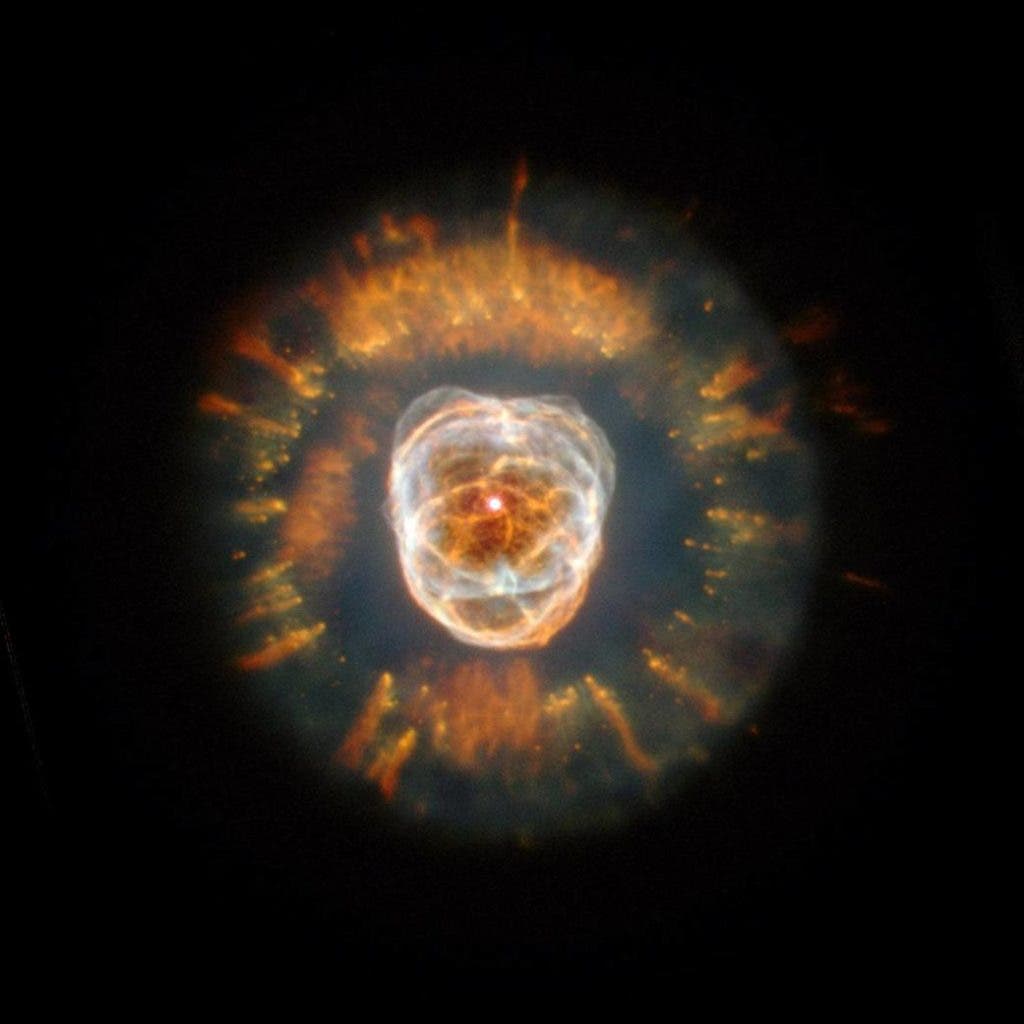
Image credits NASA.
You can’t spend much on Earth without noticing the Sun. This great big ball of atomic fire dominates the sky, and for good reason — it’s the largest body in the solar system. However, although it dwarfs anything in its close vicinity, the Sun isn’t that big for a star; actually, it’s pretty much average.
So, are there bigger stars out there? Yes, definitely; our Sun is technically a yellow dwarf, which makes it slightly below the average star size. They get much, much bigger. In this article, we’ll explore the largest stars astronomers have identified thus far, starting with the crown jewel itself.
UY Scuti: the largest star in the known universe
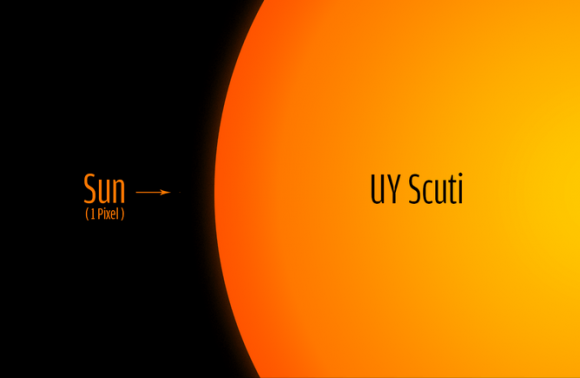
Deep in the heart of the galaxy, a star unlike any other burns bright. This is not your average star – it is a behemoth, a giant among giants. Meet UY Scuti, the largest known star in the universe.
UY Scuti lies some 9,500 light-years away, close to the center of the Milky Way in the constellation Scutum (‘shield’). It’s a dust-enshrouded red supergiant (the largest class of stars out there) that’s around 1,700 times larger than our Sun in diameter.
It was first spotted in 1860 by two German astronomers, J.C. Müller and P.R. Ritter, at the Bonn Observatory, who initially christened it BD -12 5055. However, it wasn’t until 2012 that a team of astronomers using the Very Large Telescope in Chile confirmed its stupendous size, also showing the giant star grows brighter and dimmer over a 740-day period. This behavior classifies UY Scuit as a variable star, a type of star that regularly expands and shrinks as its brightness changes.
To give you an idea of just how huge UY Scuti is, if it replaced the Sun at the center of our solar system, its photosphere would extend past the orbit of Jupiter. The distance from the Sun to Jupiter is approximately 779 million km, or 484 million miles. Gas emanating from the star would form a nebula extending 400 AU (one astronomical unit, AU, is the distance between the Earth and the Sun). In effect, this would reach far beyond the orbit of Pluto (the average orbiting distance between Pluto and the Sun is 39.5 AU).
So what makes UY Scuti so large? The answer lies in its composition. UY Scuti is a red supergiant, a type of star that is in the late stages of its life. These types of stars have exhausted the hydrogen fuel in their cores and have begun to fuse helium instead. As the star continues to fuse helium, it expands and cools, becoming one of the largest but also the coolest (quite literally) stars in the universe.
But here’s the rub. We don’t know for sure how big UY Scuti is because of its habit of changing in size. The shifts in brightness we mentioned earlier come hand-in-hand with variations in its radius, measured with a margin of error of about 192 solar radii. If the lower-most value is correct, UY Scuti could be out-sized by other stars — around 30 known stars would out-size UY Scuti’s smallest estimated size.
At some point, one of those stars will surely overtake its crown since UY Scuti is too large for its own good. It’s so large that its gravity is not strong enough to hold onto its outer layers. As a result, UY Scuti is losing mass at an alarming rate, losing the equivalent of 20 million times the mass of the earth every year. This loss of mass is causing the star to shrink and heat up, and it’s estimated that UY Scuti will soon enter a phase known as a supernova.
When UY Scuti will finally erupt in a supernova, it will be the mother of all fireworks. The explosion will be so powerful that it will briefly outshine the entire galaxy. The aftermath of the supernova will also be spectacular. A beautiful ring of gas and dust known as a supernova remnant will be left behind, and new elements will be created in the explosion, seeding the universe with the building blocks of life.
As we gaze up at the night sky, let us take a moment to appreciate this star of immense proportions, a true beacon of the cosmos.
A word on stars and their size
There are many different types of stars out there; some bigger, some smaller. Before going any further, however, you have to understand something: stars don’t have nice, tidy boundaries. They don’t have a rigid surface like a rocky planet or moon. Instead, these atomic fireballs have pretty diffuse surfaces as the super-heated mass of gas that makes them up slowly thins out into nothingness.
What astronomers use in lieu of a surface is a star’s photosphere — the level at which the star becomes transparent (i.e. where photons can escape the star). So, going forward, know that if I mention a star’s surface, I’m talking about its photosphere.
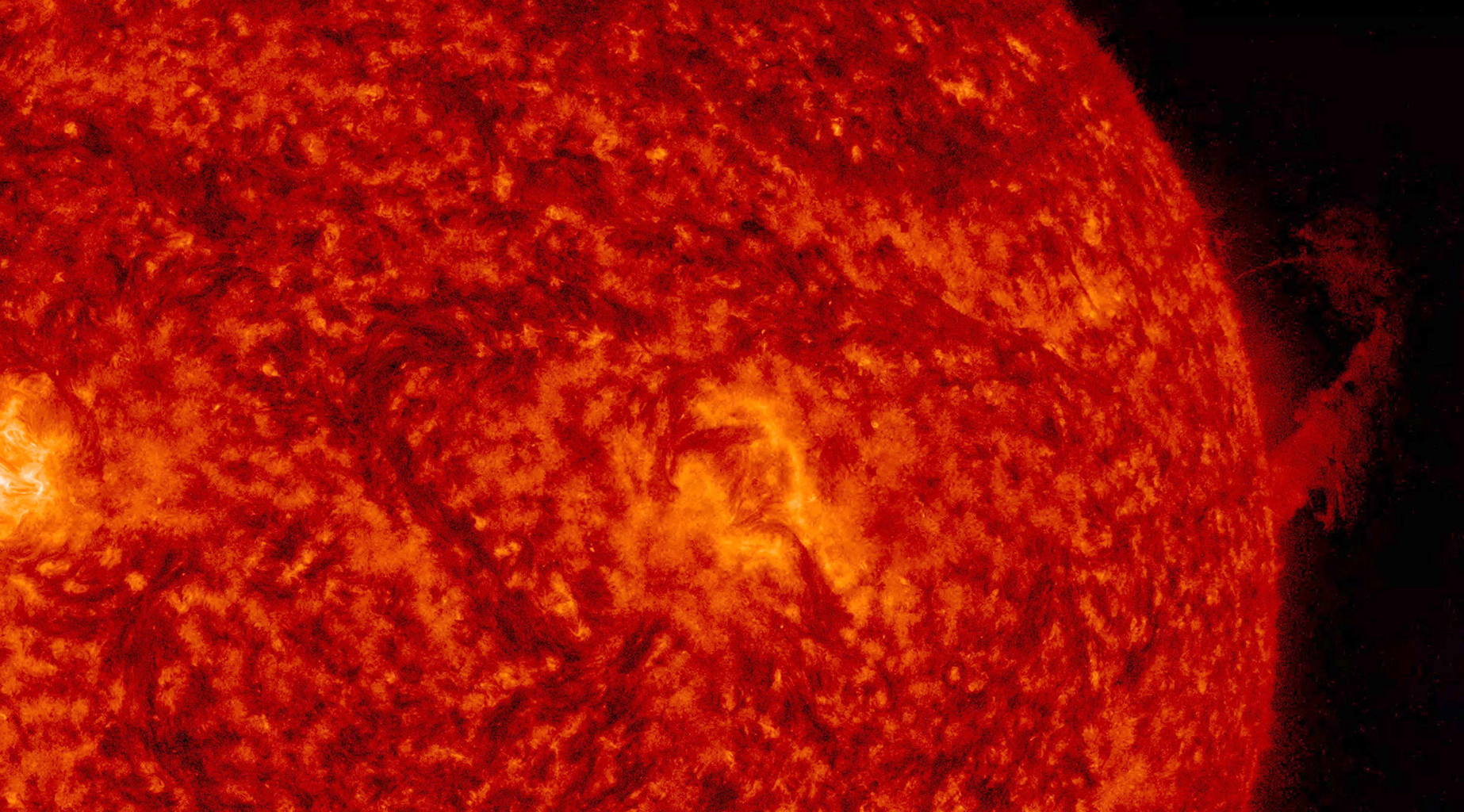
The second important thing to keep in mind is that we haven’t ever measured a star directly. Nobody went up to one with a ruler and started adding up distances. What we do have are estimations — reliable estimations, for the most part, but estimations nonetheless. Depending on a range of factors, such as distance or structures around stars or between them and Earth, these estimations can be more or less accurate, and fall within a smaller or larger area of confidence (i.e. “we know it’s between x and y miles/kilometers wide”).
Now that’s out of the way, let’s have a look at some other candidates for the top spot as the largest star in the known universe.
The largest stars in the Universe
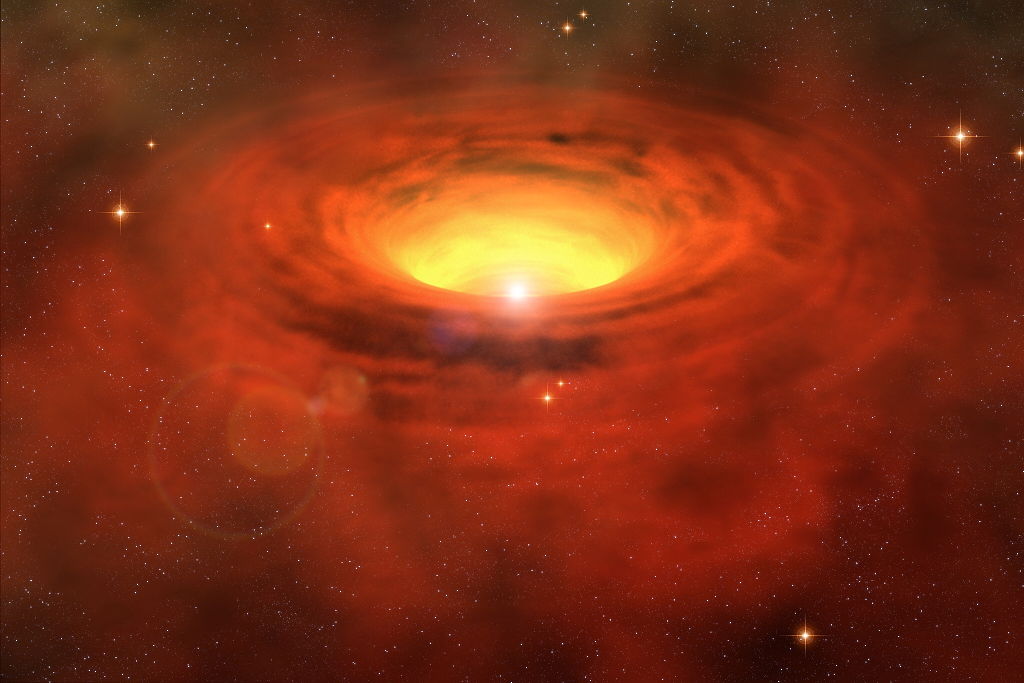
Image credits European Southern Observatory.
Remarkably, the largest stars in the universe are not as big as astronomers expected.
“Our results show us that the most massive star we currently know is not as massive as we had previously thought,” explained Kalari, lead author of a scientific paper describing observations about large stars. “This suggests that the upper limit on stellar masses may also be smaller than previously thought.”
WOH G64 (1,504 to 1,730 solar radii) — a red hypergiant star in the Large Magellanic Cloud in the constellation Dorado (in the southern hemisphere skies) located about 170,000 light-years away from Earth. This star’s brightness varies over time due, in part, to a torus-shaped cloud of dust that obscures its light. The torus was likely formed by the star during its death throes. WOH G64 was once more than 25 times the mass of the Sun, but it began to lose mass as it neared exploding as a supernova. Astronomers estimate that it has lost enough component material to make up between three and nine solar systems.
Remarkably, this star was severely underestimated at first.
“Previous estimates gave an initial mass of 40 times the mass of the sun to [the star] WOH G64, said Keiichi Ohnaka, lead astronomer on the study at the Max-Planck Institute for Radio Astronomy in Bonn, Germany. But this was a real problem as it was way too cold, compared to what theoretical models predict for such a massive star. Its existence couldn’t be explained.”
Mu Cephei (around 1,650 solar radii) — a red supergiant in the constellation Cepheus, 9,000 light-years from Earth. With more than 38,000 times the Sun’s luminosity, it’s also one of the brightest stars in the Milky Way.
V354 Cephei (1,520 solar radii) — a red hypergiant in the constellation Cepheus. V354 Cephei is an irregularly variable star, which means that it pulsates on an erratic schedule.
RW Cephei (1,535 solar radii) — an orange hypergiant in the constellation of Cepheus; also a variable star. This star is also a bit puzzling.
“The star is significantly dimming, instead of rebrightening,” reads an Astronomers’s Telegram notice from a pair of European sky watchers. Experts Wolfgang Vollman and Costantino Sigismondi draw parallels to Betelgeuse. “This phenomenon undergoing on RW Cep might be similar to the one occurred to the red supergiant Betelgeuse at the end of 2019.”

Image credits 2MASS / UMass / IPAC-Caltech / NASA / NSF.
Westerlund 1-26 (1,530 to 2,550 solar radii). That’s quite a large estimate interval; if the upper estimate is correct, it would dwarf even UY Scuti, and its photosphere would reach farther than Saturn’s orbit. Westerlund 1-26 stands out as its temperature varies over time, but not its brightness.
KY Cygni (1,420 to 2,850 solar radii) — a red supergiant in the constellation Cygnus. The upper estimate is viewed with skepticism as a likely observational error, while the lower one is consistent with other stars from the same survey and with our understanding of stellar evolution.
VY Canis Majoris (1,300 to 1,540 solar radii) — a red hypergiant star that was previously estimated to be 1,800 to 2,200 solar radii, but that size puts it outside the bounds of stellar evolutionary theory and was updated. Still, I have seen this star listed as the largest in some sources.
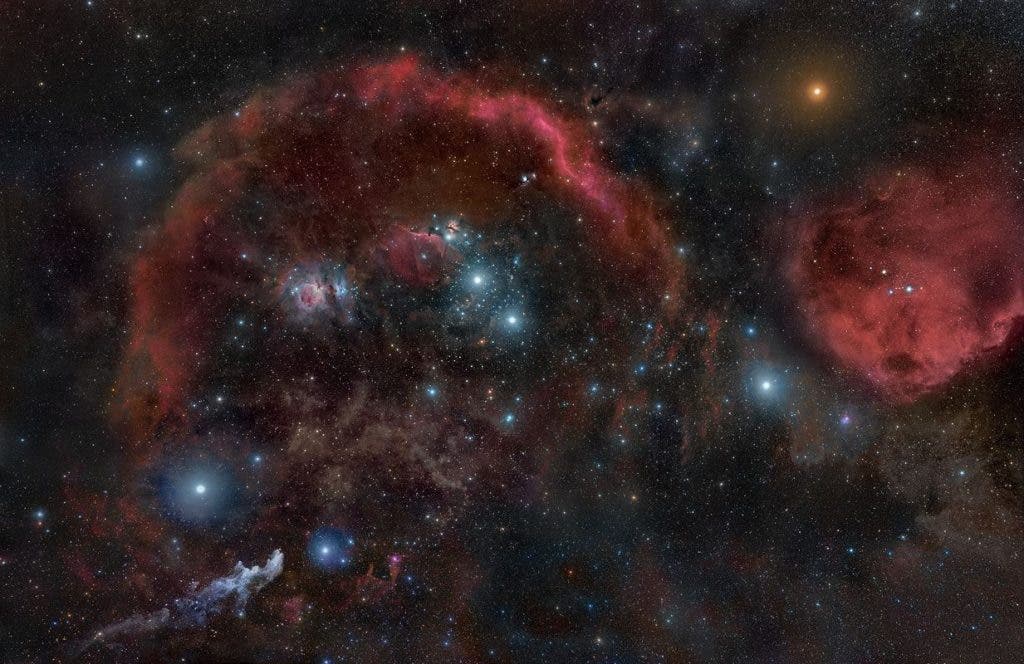
Image credits Rogelio Bernal Andreo.
Betelgeuse (950 to 1,200 solar radii) — a red supergiant in the constellation Orion. Betelgeuse is one of the most well-known stars of its kind, as it’s the ninth-brightest star in the sky and can easily be seen with the naked eye between October through March on a clear night. It’s the closest star on this list and is expected to go supernova pretty much at any time.
Do note that stars, being balls of superhot plasma, don’t follow a linear weight-size relationship like you’d expect in, say, a cannonball, where the bigger shell is obviously heavier. UY Scuti, despite being one of the or the largest star we know, isn’t the most massive one. That title comes to R136a1, a Wolf–Rayet star in the Tarantula Nebula some 163,000 light-years away. It has the highest mass and luminosity of any known star, and is also one of the hottest, at around 53,000 K.
Ironically enough, R136a1 weighs in at about 300 times the mass of the Sun but is only about 30 solar radii in size. UY Scuti is just 30 times more massive than the Sun despite being way larger. R136a1’s mass can be explained by its very high surface enhancement of heavy elements (which are dense) and depletion of hydrogen (which is light).


